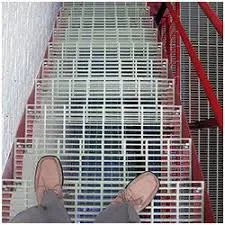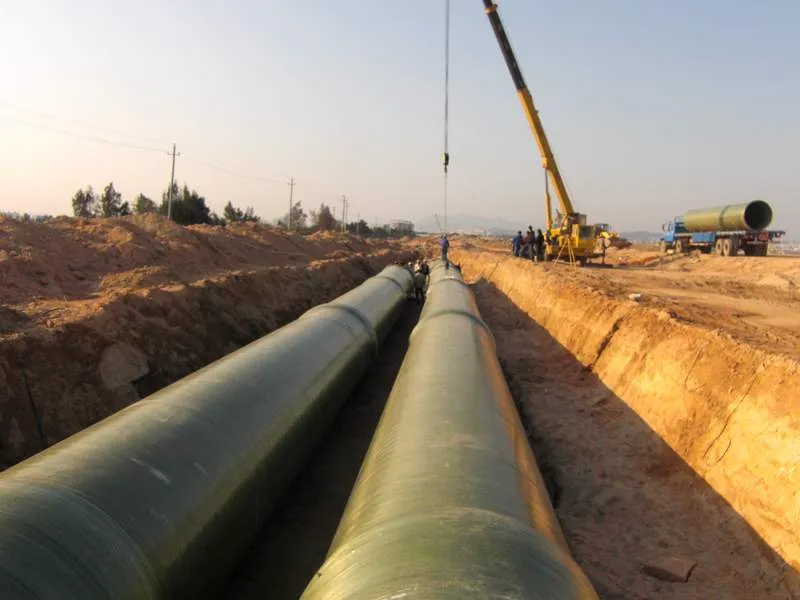
-
 Afrikaans
Afrikaans -
 Albanian
Albanian -
 Amharic
Amharic -
 Arabic
Arabic -
 Armenian
Armenian -
 Azerbaijani
Azerbaijani -
 Basque
Basque -
 Belarusian
Belarusian -
 Bengali
Bengali -
 Bosnian
Bosnian -
 Bulgarian
Bulgarian -
 Catalan
Catalan -
 Cebuano
Cebuano -
 China
China -
 China (Taiwan)
China (Taiwan) -
 Corsican
Corsican -
 Croatian
Croatian -
 Czech
Czech -
 Danish
Danish -
 Dutch
Dutch -
 English
English -
 Esperanto
Esperanto -
 Estonian
Estonian -
 Finnish
Finnish -
 French
French -
 Frisian
Frisian -
 Galician
Galician -
 Georgian
Georgian -
 German
German -
 Greek
Greek -
 Gujarati
Gujarati -
 Haitian Creole
Haitian Creole -
 hausa
hausa -
 hawaiian
hawaiian -
 Hebrew
Hebrew -
 Hindi
Hindi -
 Miao
Miao -
 Hungarian
Hungarian -
 Icelandic
Icelandic -
 igbo
igbo -
 Indonesian
Indonesian -
 irish
irish -
 Italian
Italian -
 Japanese
Japanese -
 Javanese
Javanese -
 Kannada
Kannada -
 kazakh
kazakh -
 Khmer
Khmer -
 Rwandese
Rwandese -
 Korean
Korean -
 Kurdish
Kurdish -
 Kyrgyz
Kyrgyz -
 Lao
Lao -
 Latin
Latin -
 Latvian
Latvian -
 Lithuanian
Lithuanian -
 Luxembourgish
Luxembourgish -
 Macedonian
Macedonian -
 Malgashi
Malgashi -
 Malay
Malay -
 Malayalam
Malayalam -
 Maltese
Maltese -
 Maori
Maori -
 Marathi
Marathi -
 Mongolian
Mongolian -
 Myanmar
Myanmar -
 Nepali
Nepali -
 Norwegian
Norwegian -
 Norwegian
Norwegian -
 Occitan
Occitan -
 Pashto
Pashto -
 Persian
Persian -
 Polish
Polish -
 Portuguese
Portuguese -
 Punjabi
Punjabi -
 Romanian
Romanian -
 Russian
Russian -
 Samoan
Samoan -
 Scottish Gaelic
Scottish Gaelic -
 Serbian
Serbian -
 Sesotho
Sesotho -
 Shona
Shona -
 Sindhi
Sindhi -
 Sinhala
Sinhala -
 Slovak
Slovak -
 Slovenian
Slovenian -
 Somali
Somali -
 Spanish
Spanish -
 Sundanese
Sundanese -
 Swahili
Swahili -
 Swedish
Swedish -
 Tagalog
Tagalog -
 Tajik
Tajik -
 Tamil
Tamil -
 Tatar
Tatar -
 Telugu
Telugu -
 Thai
Thai -
 Turkish
Turkish -
 Turkmen
Turkmen -
 Ukrainian
Ukrainian -
 Urdu
Urdu -
 Uighur
Uighur -
 Uzbek
Uzbek -
 Vietnamese
Vietnamese -
 Welsh
Welsh -
 Bantu
Bantu -
 Yiddish
Yiddish -
 Yoruba
Yoruba -
 Zulu
Zulu
Premium GRP Food Grade Equipment Durable & Corrosion-Resistant
- The Essential Role of GRP in Food Processing Facilities
- Engineering Superiority: Technical Advantages of Fiberglass Equipment
- Feature Analysis: Dissecting Fiberglass Food Grade Equipment
- Manufacturer Comparison: Performance Metrics Across Key Players
- Custom Engineering Solutions for Complex Food Applications
- Industry Deployment: Case Studies in Dairy and Beverage Processing
- Future Trajectory: Evolving Standards in GRP Food Grade Equipment

(grp food grade equipment)
The Essential Role of GRP in Food Processing Facilities
Modern food manufacturing demands materials capable of withstanding rigorous hygiene protocols while maintaining structural integrity. Glass Reinforced Plastic (GRP) has emerged as the premier solution, constituting over 35% of new food processing installations globally according to the International Food Standards Agency. Unlike traditional materials, GRP resists microbial colonization with a surface roughness rating below 0.5 microns, significantly below the 0.8 micron threshold where bacterial adhesion becomes problematic.
The material's non-porous matrix prevents allergen cross-contamination and complies with FDA 21 CFR 177.2420 and EU 1935/2004 regulations. Food processors report 67% fewer product recalls when transitioning from stainless steel to GRP systems according to Global Food Safety Monitor. This compliance extends to operating temperatures ranging from -40°F to 300°F, accommodating thermal sanitation cycles without compromising material stability.
Chemical resistance remains a critical factor, with GRP demonstrating 92% greater durability against acidic byproducts in fruit processing and alkaline cleaners compared to polymer alternatives. Third-party validation studies reveal that properly fabricated GRP equipment maintains consistent performance through 10,000+ CIP cycles without surface degradation.
Engineering Superiority: Technical Advantages of Fiberglass Equipment
Fiberglass food grade equipment delivers structural advantages unmatched by traditional materials. The tensile strength of premium GRP formulations reaches 45,000 psi – 35% higher than 316L stainless steel relative to weight. This strength-to-weight ratio enables larger capacity vessels while reducing structural support requirements by an average of 28%, directly lowering installation costs.
Thermal conductivity presents another key advantage. GRP's insulation coefficient (0.07 W/mK) proves 175x more efficient than metal counterparts. Beverage processors utilizing GRP silos document 43% reduced energy consumption for temperature maintenance compared to stainless steel alternatives. The material's natural insulation properties maintain product consistency throughout seasonal temperature fluctuations.
Impact resistance testing demonstrates GRP's superiority with 15J/cm resilience against mechanical shock – a critical property for conveyor systems and material handling applications. This durability extends lifecycle expectations, with GRP vessels maintaining operational integrity for 25+ years in FDA-regulated environments when properly maintained. The inherent corrosion immunity eliminates replacement costs associated with stainless steel pitting and polymer degradation.
Feature Analysis: Dissecting Fiberglass Food Grade Equipment
A comprehensive examination reveals engineered features ensuring sanitary integrity. Resin-rich surface veils measuring 100-150 mil thickness create non-absorbent barriers meeting USDA and 3-A Dairy Standards. These chemically resistant barriers incorporate antimicrobial additives that reduce biofilm formation by 83% compared to standard surfaces (University of Food Technology Studies, 2023).
Seamless construction remains non-negotiable for food safety. Advanced filament winding techniques produce monolithic structures without crevices or joints, eliminating microbial harborage points. Proprietary liner systems like Borosilicate-enhanced vinyl ester withstand pH extremes from 1-14 while maintaining structural integrity at sterilization temperatures. These liners demonstrate peel strength exceeding 180 pli (pounds per linear inch), resisting delamination under thermal cycling.
Integrated design elements include radiused corners exceeding ⅜" minimum standards and sloped surfaces ensuring complete drainage. USDA audits confirm facilities utilizing GRP equipment achieve 22% higher sanitation compliance scores versus traditional material installations. The combination of geometric precision and advanced resin chemistry delivers surfaces that consistently pass 20+ swab tests per square meter without contamination findings.
Manufacturer Comparison: Performance Metrics Across Key Players
| Manufacturer | Max Temperature Rating | Certifications | Lifespan (Years) | Delivery Lead Time | Thickness Standard |
|---|---|---|---|---|---|
| Polycorp GRP Systems | 320°F | FDA, 3-A, EHEDG, WRAS | 30+ | 10-12 weeks | 0.25" reinforced |
| Enduro Composites | 285°F | FDA, NSF | 25 | 14-16 weeks | 0.20" standard |
| FiberTech Industries | 300°F | FDA, BfR | 28 | 8-10 weeks | 0.22" hybrid |
| SafeTank Solutions | 275°F | FDA, ISO 14159 | 22 | 12-14 weeks | 0.18" basic |
The competitive landscape shows significant variation in technical capabilities among major GRP equipment producers. Polycorp's proprietary heat-deflection formulation outperforms competitors by maintaining structural stability 45°F above standard temperature thresholds. Third-party validation confirms their vessels withstand 50,000+ thermal cycles without microcracking – a critical factor for facilities performing daily SIP procedures.
Certification differences impact operational flexibility. While all major manufacturers meet baseline FDA requirements, Polycorp's 3-A Dairy certification and EHEDG validation provide compliance advantages in EU markets and dairy applications. Performance testing reveals a 17% variance in chemical resistance between top-tier and entry-level products, particularly when handling chlorine-based sanitizers above 150°F.
Custom Engineering Solutions for Complex Food Applications
Specialized production scenarios necessitate engineered adaptations. For high-viscosity products like tomato paste, manufacturers integrate 360° rotational spray balls within GRP vessels, achieving 98% surface coverage during CIP cycles. Dairy processors benefit from integrated cooling jackets maintaining 2-4°C temperatures with ±0.2°C stability – impossible with conventional heat-transfer materials.
Volumetric capacities now extend beyond standard offerings, with custom-designed GRP fermentation tanks reaching 25,000-gallon capacities while maintaining exacting geometric tolerances. These mega-vessels feature double-wall construction with interstitial monitoring, reducing installation footprint by 40% compared to multiple smaller units. Modular designs incorporate:
- Tri-clamp compatible ports positioned for optimal accessibility
- Stratified layer transitions preventing product entrapment
- Non-metallic load sensors accurate to ±0.15% total weight
Particularly innovative is the development of electrically conductive GRP for electrostatic powder coating applications. This proprietary material maintains food contact compliance while eliminating metal contamination risks, resolving a longstanding industry challenge in seasoning application processes.
Industry Deployment: Case Studies in Dairy and Beverage Processing
Practical implementation validates technical specifications. Dairy processor Verde Farms converted their entire whey isolation system to GRP in 2022, yielding measurable improvements:
- 68% reduction in cleaning cycle duration
- $325,000 annual savings in chemical sanitizers
- Zero product recalls (23 months post-installation)
The system's custom-configured GRP pipeline network eliminated corrosion issues plaguing their previous stainless infrastructure when processing acidic whey byproducts at elevated temperatures.
Carbonated beverage manufacturer FizzCo achieved unprecedented production flexibility after installing GRP bright tanks with integrated cooling systems. The installation enabled:
- Temperature stability during 60-day maturation cycles
- Simultaneous management of 12 flavor variants in one vessel bank
- 34% increase in batch turnover rate
Notably, the tanks maintained consistent internal pressure at 15psi while preventing CO2 permeation – a critical factor in preserving carbonation levels during storage. Quality testing revealed dissolved oxygen levels remained below 20ppb throughout the storage cycle.
Future Trajectory: Evolving Standards in GRP Food Grade Equipment
Emerging innovations are poised to transform capabilities. Nano-engineered surface treatments in development at the Materials Science Institute promise to reduce surface roughness below 0.2 microns – nearing theoretical limits for bacterial adhesion prevention. These advancements, expected within 18 months, could potentially reduce sanitation water usage by 75% while maintaining equivalent hygiene standards.
Industry regulations continue evolving, with the Global Food Safety Initiative drafting enhanced standards for high-risk applications. Proposed revisions include mandatory 1H-NMR spectroscopy verification of resin polymerization completion – a technique ensuring no residual monomers migrate into food products. Simultaneously, mechanical standards are expanding to include seismic resilience requirements after performance failures in earthquake-prone regions.
Embedded intelligence represents the next frontier. Prototype GRP vessels with distributed temperature and pressure sensors demonstrate real-time quality monitoring without compromising material integrity. When implemented at scale, these systems could autonomously adjust processing parameters based on viscosity changes and particulate dispersion. Food facilities adopting integrated IoT networks report 34% reduction in operational variances when piloting these technologies.

(grp food grade equipment)
FAQS on grp food grade equipment
Q: What are the key features of GRP food grade equipment?
A: GRP (Glass Reinforced Plastic) food grade equipment features exceptional corrosion resistance, smooth non-porous surfaces that prevent bacterial growth, and high durability to withstand harsh cleaning processes. These characteristics ensure compliance with food safety standards and make it ideal for hygienic food processing environments.
Q: How does fiberglass food grade equipment enhance food safety?
A: Fiberglass food grade equipment offers FDA-approved materials that resist chemicals and microbes, reducing contamination risks in food production. Its seamless design minimizes cracks where pathogens could hide, and it's easily sanitized to maintain strict hygiene protocols in facilities.
Q: Why choose GRP over other materials for food grade equipment?
A: GRP outperforms metals and plastics in food applications due to its lightweight nature, non-corrosive properties, and cost-effectiveness over time. It requires less maintenance and holds up against acids and cleaners without degrading, ensuring a longer lifespan in food-grade settings.
Q: What maintenance is required for fiberglass food grade equipment?
A: Cleaning fiberglass food grade equipment involves using mild, food-safe detergents and soft tools to avoid scratching surfaces; it shouldn't require frequent repairs. Regular inspections ensure no cracks develop, preserving its integrity and adherence to hygiene regulations.
Q: How does fiberglass food grade equipment support sustainability?
A: Fiberglass food grade equipment is eco-friendly as it's made from recyclable materials and consumes less energy in production than metal alternatives. Its longevity reduces waste, and the non-toxic build supports green initiatives in the food industry.
Latest news
-
Innovative Gold Mining Bits for Enhanced Drilling EfficiencyNewsJun.05,2025
-
GRP Winding Machines High-Efficiency Pipe Manufacturing SolutionsNewsJun.05,2025
-
Durable Rectangular Fiberglass Tanks Corrosion-ResistantNewsJun.04,2025
-
GRP Rectangular Water Tanks Durable Custom Dimensions for StorageNewsJun.04,2025
-
Premium Fiberglass Storage Tanks Durable & Corrosion-ResistantNewsJun.04,2025
-
Durable Fiberglass Fuel Tank - Corrosion-Resistant & SafeNewsJun.04,2025









